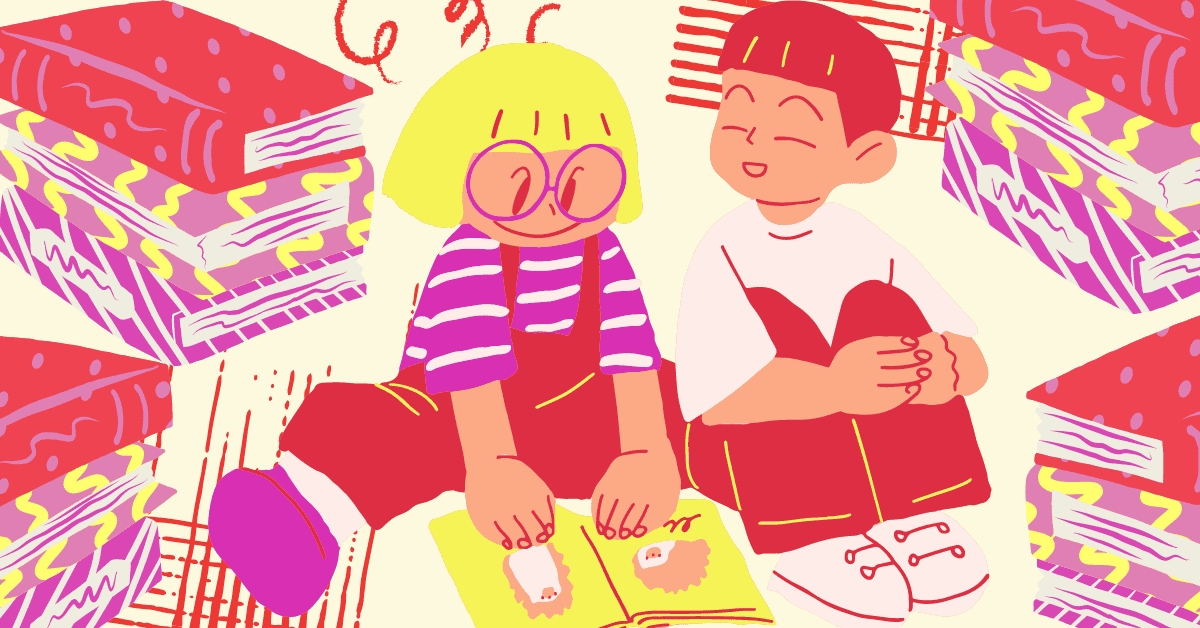Japanese picture books, or ehon (絵本), are great tools for kids to learn Japanese. They’re packed with the right balance of cute graphics, dialogues, Japanese sentences and an entertaining storyline. The illustrations can become contextual cues for children, providing a sort of ‘cushion’ when you’re reading the text. All of these make studying Japanese less overwhelming and, well, more fun and educational — especially when it’s for children or beginner-level students.
Just like famous Japanese authors like Haruki Murakami and Banana Yoshimoto, some of the best and most classic children’s books are written by well-known writers and illustrators. In fact, they have been so popular that they’re developed into series and translated to English. You can easily notice them from their iconic art style and characters: a rabbit, a mouse, a daruma and other peculiar creatures.
Many Japanese picture books for children can also teach about Japanese culture and become a backdoor to understanding how Japanese society works. Perhaps the best part of reading Japanese picture books is that they are more interactive than normal textbooks or learning apps. Some books leave readers curious about the next page because there’s a lot of guessing game: Is the next turn the answer? What’s inside the apple?
Check out our favorite Japanese books for children that are easy, fun and creative.
Elements of a Japanese Children’s Books
What is Ehon?
Ehon is the Japanese name for illustrated books. The word is comprised of two kanji: 絵 (e), which means “drawing”, and 本 (hon), which means book. Pretty self-explanatory, right? Initially, ehon were specifically paintings drawn in woodblock prints published in the Edo and Meiji period. Toward the end of the 19th century, the definition of ehon becomes more generic and gravitated towards more western concepts of commercial literature.
Now, ehon are picture books with stories made for children.
More Pictures Than Sentences and Dialogues
Open a children’s book at your local bookstore in Japan, and you’ll notice that the graphics take more space than the text. In fact, you’ll probably get one to two sentences per page. This
While there are a lot of visual novels and books with illustrations, Japanese picture books for children (ehon) are inherently unique, in the sense that the narrative relies heavily on the images on every page. The images carry the story and engage the reader as they can also provide context to not only help you read, but read between the lines as well.
Learning new words from picture books can help you gain a better understanding of their nuance, and provide concrete examples of how and when they’re typically used in context, which is something direct translations can’t always achieve.
Little to No Kanji
This can be a drawback or benefit of Japanese children’s books (ehon), depending on how you look at it. When it comes to Japanese school children, they have to learn kanji by learning the kanji with the simplest meanings first. This actually makes sense because they’re little kids and they need to learn vocabulary words.
While this is helpful for a child’s learning growth, parents will often times read the book to their kids. If you already have decent kanji knowledge, you might need more time to grasp the sentence if it’s all in hiragana. You may not be comfortable reading all-kana text at first, but you’ll get used to it as you read.
They Focus on Rhythm and Pronunciation
You’ll notice a lot of ehon incorporating onomatopoeia and rhythmic-like texts. This is because ehon are written for children who are getting used to the Japanese language. Although they’re not filled with tongue-twisters in particular, Japanese kid’s books tackle tricky sounds, like small tsu.
Our Favorite Kids Japanese Picture Books (Ehon)
1. ぐりとぐら (Guri and Gura)

Guri to Gura (ぐりとぐら) is probably the most popular picture book in Japan. It tells about two anthropomorphic mice who are very fond of cooking and eating. In their initial story, both protagonists come across a huge egg in the middle of the woods. They decided to make a huge sponge cake and share it with other animals.
The Japanese children’s book is written by Rieko Nakagawa and Illustrator Yuriko Yamawaki. The first volume was published in 1963 in a monthly magazine, and it has since been so well-known (355 million copies by 1996) that it’s translated into several languages. Eventually, the book spun off into a series of ehon. Buy here.
Level: Age 4–8
2. しろくまちゃんのほっとけーき (Shirokuma-chan’s Pancakes)

Simple pictures and unique Japanese onomatopoeia makes Shirokuma-chan no Hottokeeki a young children’s best-selling book for more than 30 years. The picture book follows Little Polar Bear (Shirokuma-chan) who’s making pancakes with her mama. When they are finished cooking, she invites her friend Little Bear (Koguma-chan) to eat them with her.
There are many sequels to this book, but the most popular one remains the first series. A part of the book is devoted to the sound of cooking pancakes. Buy here.
Level: Age 3–5
3. だるまちゃんとてんぐちゃん (Little Daruma and Little Tengu)

In Japanese, tengu is a mischievous supernatural being, and Daruma is a symbol of good luck. Satoshi Kako, the writer, made these two traditional Japanese characters cute and fun for children. The story follows Daruma-chan, who is envious of Tengu-chan’s fan, nose and wooden clogs.
Another classic picture book, Daruma-chan to Dengu-chan is a humorous take on children who wants to be their friends — or imitate those around them. The ehon features watercolor illustrations, making it a great book for children and adults to learn Japanese. Buy here.
Level: Age 3–5
4. きいろいのは ちょうちょ (Yellow Butterfly)
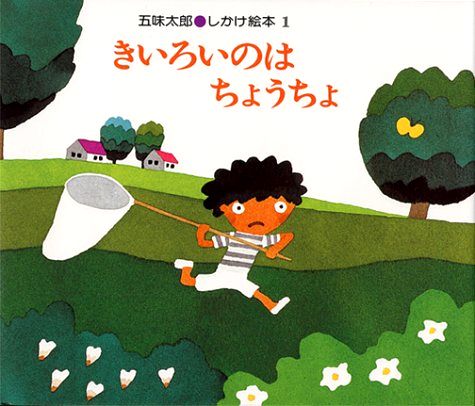
Yellow Butterfly is an unexpectedly fun Japanese children’s book that captures the mind and senses of young toddlers: curiosity. Taro Gomi explores the sense of colors and shapes perceived by children, helping them get creative.
The children book follows a young boy who’s trying to catch a butterfly, except there’s a catch: he perceives everything yellow as a butterfly. On one side of the page, the boy is getting ready to capture the butterfly with his net. You will have to flip to another page to find out the real object. It keeps children (and even adults) guessing: Will it be a butterfly or just a yellow flower? When will the yellow butterfly appear in the story? Buy here.
Level: Age 3–5
5. おまえうまそうだな (You Look So Yummy)
Don’t let the title, Omae umasou da na, fool you into thinking that this is a book to scare children. You Look Yummy! Is an endearing father-and-son story. A big, intimidating T-rex is about to pounce when a small dynosaurus baby grabs his leg and cries out, “Daddy!”
From this misunderstanding, the two develop a strong family bond and teach children that the strongest bond isn’t always a biological one. The picture book doesn’t just celebrate the love between father and son — it highlights the importance of family. Buy here.
Level: Age 4–10
6. こんとあき (Kon and Aki)
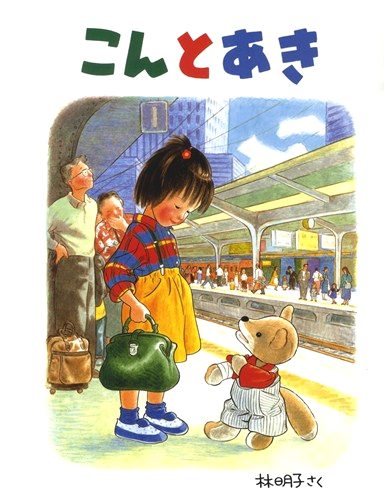
A touching story made by Akiko Hayashi, Kon and Aki tells the story between a young girl, Aki, and her plush fox, Kon. The fox was made by her grandma, and when the fox becomes worn out, Aki decides to embark on a journey to her grandma’s house to have him repaired. Along the way, Aki encounters various problems: getting the plush snatched by a dog, having the fox’s tail stuck on the door train, and more.
With Akiko Hayashi’s gentle text, endearing pictures and preference pastels, the classic book teaches children the dept of friendship, love and perseverance. Buy here.
Level: Age 3–5
7. りんごかもしれない (Might Be An Apple)
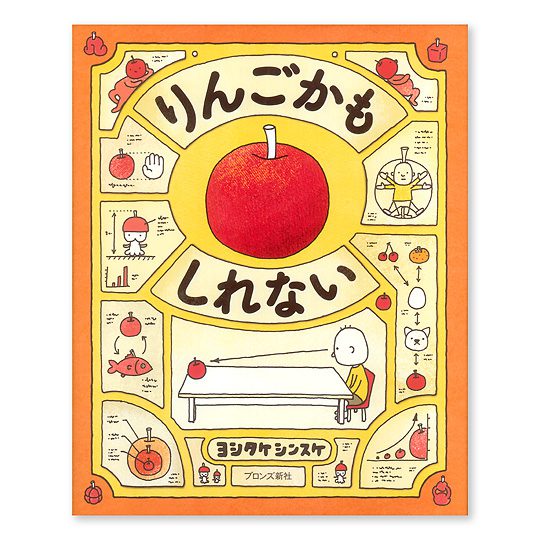
A premise similar to きいろいのは ちょうちょ (Kiiroi No Wa Choucho), りんごかもしれない (Ringo Kamo Shirenai) follows a child’s hilarious and fun journey of coming across apple lookalikes. As he looks at what appears to be an apple, the boy’s imagination spirals into thoughts of all the things an apple can be. The book is crazy, funny and thought-provoking, encouraging children to start getting curious and questioning what they see in the world. Buy here.
Level: Age 10
8. ねないこだれだ (Who’s Not Sleeping)
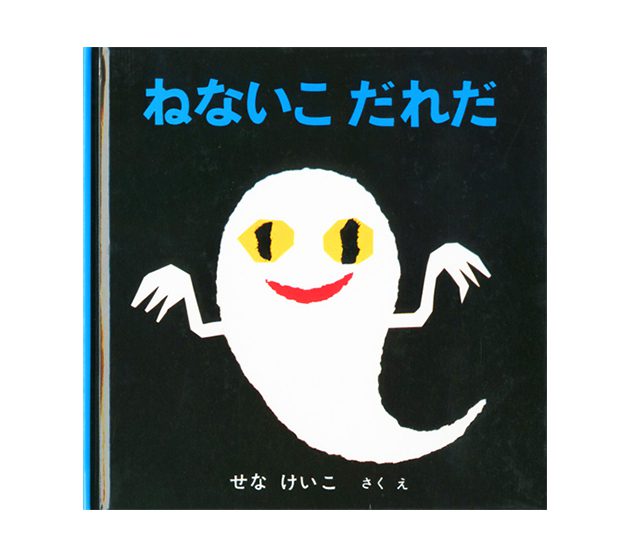
Every country has its own take on boogymen — and scary bedtime stories to aid children to fall asleep. ねないこだれだ (Nenaiko Dare Da) has been used by Japanese families since 1969 to help children go to bed. It describes all the scary things that appear in the middle of the night and a flying ghost who will snatch children if they’re not asleep. Buy here.
Level: Age 0–2
Want your children to discover the joy of learning and speaking Japanese?
Coto Academy provides personalized online Japanese language courses for children in the comfort of your home, from anywhere in the world. We match you with native Japanese speakers who are experienced in teaching in an online environment and have taken special training in child language education.
We put safety, comfort and fun as cornerstones of our curriculum. As parents, find out how we can provide the best learning experience by filling out this contact form or email us at info@cotoacademy.com for any questions.
